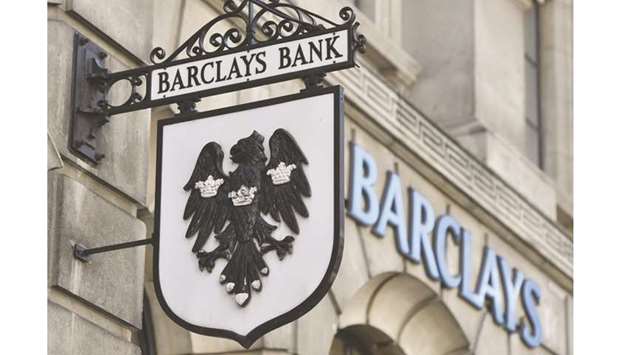Britain took a step into uncharted territory this year, aiming to make its banks safer. But it might have just driven risk to places where it’s less manageable than before. The experiment – the result of an analysis of how the financial crisis damaged Britain’s economy – began January 1. Big lenders were “ring-fenced”: Retail deposit-taking was legally separated from riskier activities, primarily investment banking. Advocates compared ring-fencing to the US Glass-Steagall act, passed after the 1929 crash.
Britain’s big international players, Barclays and HSBC Holdings, are now barred from moving much of their domestic earnings into their international arms. However, they’ve used the trapped capital to start a price war in home mortgages. That’s hurt the small lenders the government hoped would thrive post-crisis – and driven some of them to extend questionable credit to make a profit.
“The fundamental problem is that risk is being pushed out from the centre,” said Stephen Jones, chief executive of UK Finance, the industry lobby group. “Banks that are able to lend very cheaply are at the lowest end of the risk spectrum, and that is driving the high-funding-cost, non-ring-fenced banks to make the riskier loans.
There is potentially quite a dangerous cocktail of conflicting regulation and consequences building up.” The escalating risk comes against the backdrop of Britain’s impending exit from the European Union. However, while Brexit has weighed on the bigger lenders and slowed investment, ring-fencing has been more disruptive in the domestic banking scene.
For the small banks, the message has been clear: get bigger, get specialised, or get out of there. Smaller lenders grew quickly in mortgage lending to “niche borrowers” to “gain a foothold in the market,” Fitch Ratings said earlier this year.
Small banks also drew the attention of the Bank of England – which named Andrew Bailey, head of the Financial Conduct Authority, the top financial regulator, as its next governor. The BoE examined 20 smaller banks and found a series of problems. While not calling them out by name, the central bank warned “fast-growing firms” had “concentrations in higher-risk market segments which may be more vulnerable to stress.”
It also said poor controls meant firms could be masking the true levels of bad debts, and highlighted weaknesses in their underwriting standards. The US considered ring-fencing but chose the Dodd-Frank reforms instead. The European Union also decided against it.
The UK‘s lonely path is gathering critics at home. “It has given rise to a competitive monster” in mortgages, said Paul Lynam, who runs Secure Trust Bank, whose products include specialist real estate and car loans. “It will ultimately create an extremely polarised market, with big banks at one end and small niche lenders at the other end, with nothing in the middle.”
He said regulators could “trim the wings” of the ring-fenced banks by requiring them to set aside more capital against a mortgage. Two banks that grew out of supermarket chains show the trend. Seven years after it first began offering mortgages, Tesco’s Tesco Bank said in May that it would exit the business, citing “challenging market conditions.”
It sold its entire portfolio to Lloyds Banking Group, the UK’s largest mortgage lender. Sainsbury’s Bank, owned by J Sainsbury, is in the process of selling its mortgage book. Metro Bank, founded by US entrepreneur Vernon Hill, is reviewing its mortgage business as part of its wider restructuring.
Secure Trust stopped making residential home loans this year. Lenders are getting out status of mortgage business. Tesco Bank sold mortgage business in September. Sainsbury’s Bank is in the process of selling mortgage business. Secure Trust Bank has closed to new business since February.
Magellan Homeloans closed to new business since March. Metro Bank is reviewing business. Customer-owned lenders that provide savings and mortgage products are also hurting.

A Barclays sign hangs outside a branch of the bank in the City of London. Britain’s big international players, Barclays and HSBC Holdings, are now barred from moving much of their domestic earnings into their international arms.


